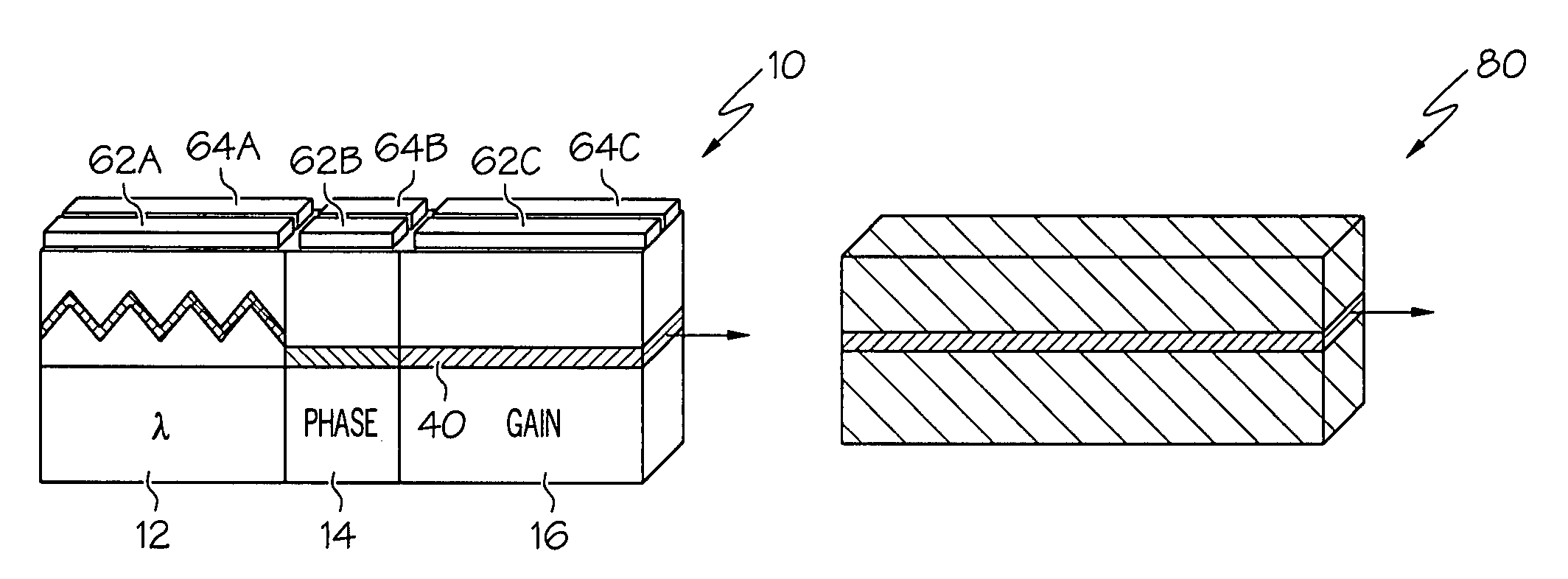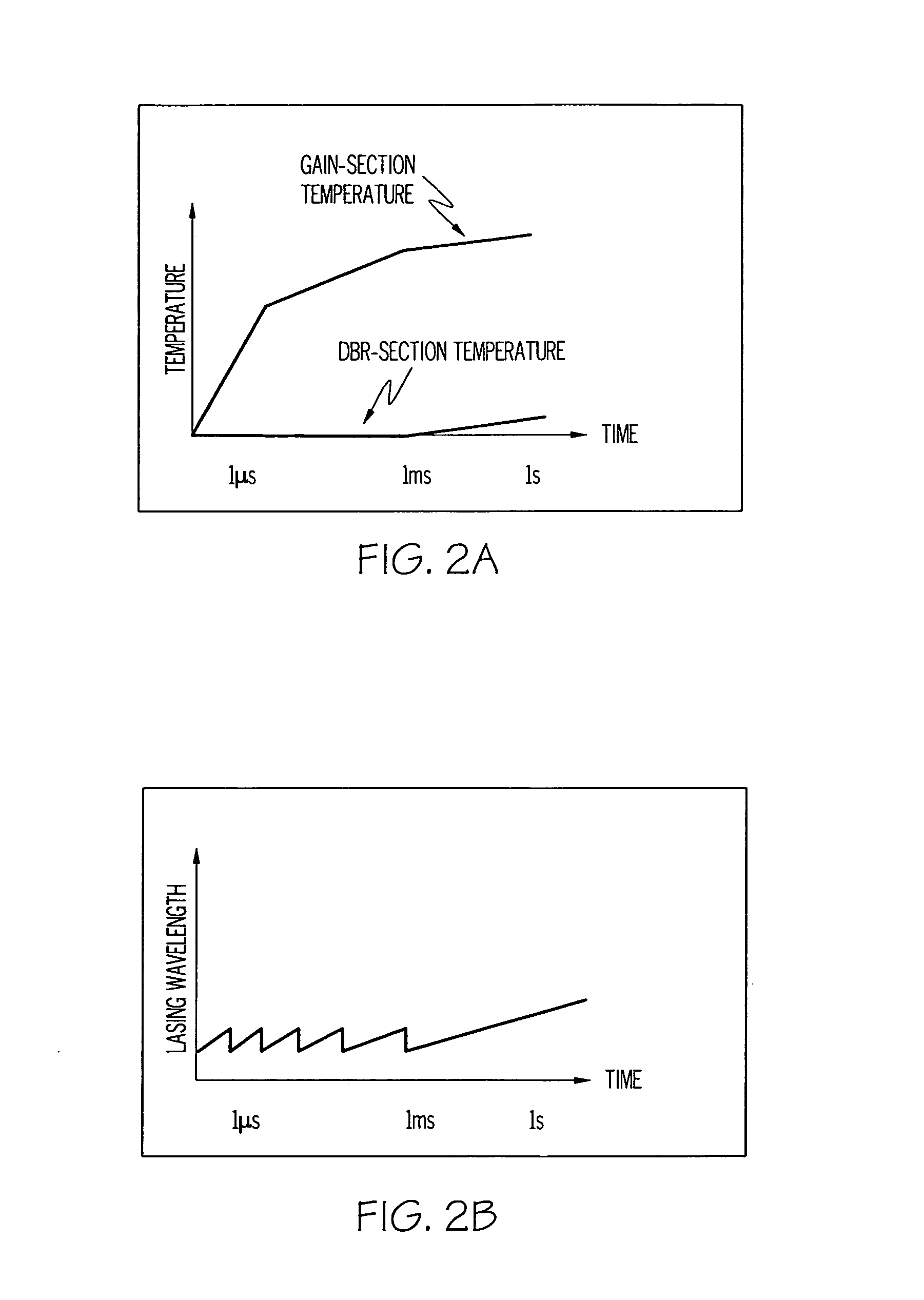Thermal compensation in semiconductor lasers
a semiconductor laser and thermal compensation technology, applied in lasers, laser cooling arrangements, laser details, etc., can solve the problems of difficult package fabrication, large on/off ratio, high modulation speed, etc., and achieve high modulation speed, optimum output power, and no noise. excessive
- Summary
- Abstract
- Description
- Claims
- Application Information
AI Technical Summary
Benefits of technology
Problems solved by technology
Method used
Image
Examples
Embodiment Construction
[0019]FIGS. 1A and 1B, are respective schematic illustrations of DFB and DBR semiconductor lasers 10 optically coupled to light wavelength conversion devices 80. The light beam emitted by the semiconductor laser 10 can be either directly coupled into the waveguide of the wavelength conversion device 80 or can be coupled through collimating and focusing optics or some type of suitable optical element or optical system. The wavelength conversion device 80 converts the incident light into higher harmonic waves and outputs the converted signal.
[0020]As will be appreciated by those familiar with DFB laser design, the DFB semiconductor laser 10 illustrated schematically in FIG. 1A comprises a distributed feedback grating that extends generally along the direction of a ridge waveguide 40 incorporated within the laser 10. Driving electrodes, not shown in FIG. 1A but discussed below with reference to FIGS. 4-6, are incorporated in the laser device to generate the electrical bias VBIAS necess...
PUM
 Login to View More
Login to View More Abstract
Description
Claims
Application Information
 Login to View More
Login to View More - R&D
- Intellectual Property
- Life Sciences
- Materials
- Tech Scout
- Unparalleled Data Quality
- Higher Quality Content
- 60% Fewer Hallucinations
Browse by: Latest US Patents, China's latest patents, Technical Efficacy Thesaurus, Application Domain, Technology Topic, Popular Technical Reports.
© 2025 PatSnap. All rights reserved.Legal|Privacy policy|Modern Slavery Act Transparency Statement|Sitemap|About US| Contact US: help@patsnap.com



